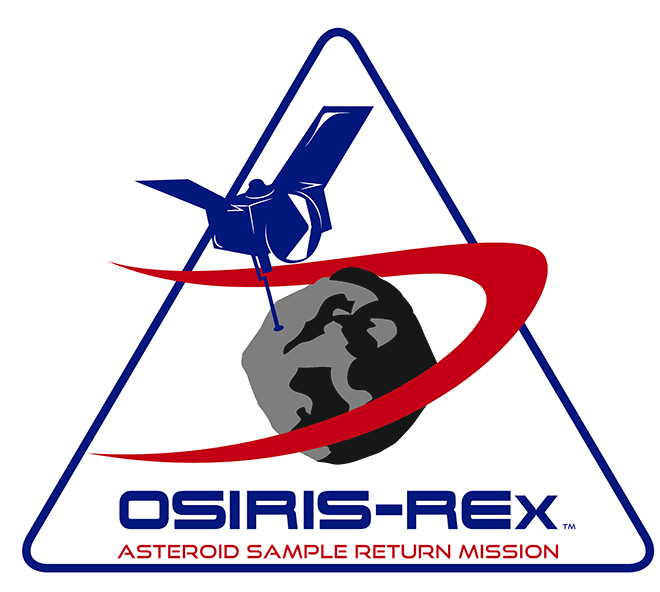Asteroids
Our solar system has about roughly one million known asteroids! The greatest number are located between the orbits of Mars and Jupiter, approximately 2 to 4 AU from the Sun, in the main asteroid belt.
As asteroids travel through space, its illuminated surface is warmed by heat from the sun. As the surface cools, the emitted heat exerts a small thrust that can modify the asteroid’s trajectory over time.
Learn more with featured asteroid Bennu!
Asteroids are small, rocky bodies found throughout the solar system.
They aren’t big enough to qualify as planets, yet they have enough mass to seriously hurt Earth if they hit it. Scientists monitor them for this reason, among others, but the likelihood of this happening is low overall.
Astronomers study asteroids mainly because of what they can teach us about the formation of our solar system.
They primarily come from the debris left behind from the creation of our solar system. They could therefore be billions of years old. The solar system and the Sun have a fascinating relationship because asteroids can educate us about the formation of our own star. Asteroids are just one member of our solar system’s large family, also consisting of the planets, comets, dust, and the Sun.
Bennu is a rotating space rock that circles the inner solar system in the main asteroid belt. Near-Earth asteroids like Bennu pose a potential danger to our planet, so it’s important to predict their orbits with great accuracy.
Unfortunately, a phenomenon called the Yarkovsky effect—caused by the Sun—can make these predictions difficult over long time periods. How does this effect work?
This force can cause rotating asteroids to drift widely over time, making it hard for scientists to predict their long-term risk to Earth.
When sunlight strikes a rotating asteroid, the dayside heats up; as the asteroid turns, the night side cools and releases the heat, exerting a small thrust that can change the asteroid’s direction over time.
In order to learn more about this process on asteroid Bennu, NASA is sending a spacecraft called OSIRIS-REx to make detailed observations of Bennu’s shape, brightness, and surface features. These factors are thought to influence the Yarkovsky effect, and understanding how will enable scientists to better predict the orbit of Bennu and other near-Earth asteroids.
Find out more about the Yarkovsky effect and asteroid Bennu in these videos.
OSIRIS-REx Sample Return Mission Launch and the Visit to Asteroid Bennu
LAUNCH: September 8, 2016 from Kennedy Space Center
SAMPLE COLLECTION: October 20, 2020 from Bennu in space
RETURN: September 24, 2023 to the Utah desert

Check out the playlist of mission highlights!
Use the menu at the top right of the YouTube player to see what videos are available.
Learn more about the mission objectives »
Uncovering the Secrets of Asteroids on NASATV
During this panel, NASA scientists (including myself) will discuss asteroids, how they relate to the origins of our solar system, and the search for life beyond Earth. Panelists for this conversation are:
- Ellen Stofan, NASA chief scientist
- Michelle Thaller, Deputy Director of Science Communications for NASA’s Science Mission Directorate
- Lindley Johnson, Director of the Planetary Defense Coordination Office in NASA’s Science Mission Directorate
- Alex Young, Associate Director for Science in the Heliophysics Science Division at Goddard
credit: NASA/SVS/OSIRIS-REx
NASA’s OSIRIS-REx: Mission to Bennu
OSIRIS-REx is the third mission in NASA’s New Frontiers Program. Its goal is to explore near-Earth asteroid Bennu, a remnant from the dawn of the solar system, and to return a sample of Bennu to Earth in 2023. OSIRIS-REx launched in September 2016 and arrives at Bennu on December 3, 2018. This video illustrates each of the mission’s carefully-designed orbit maneuvers and mapping campaigns on its journey to Bennu and back. credit: NASA/SVS/OSIRIS-REx
OSIRIS-REx Touches Asteroid Bennu
NASA’s Origins, Spectral Interpretation, Resource Identification, Security, Regolith Explorer (OSIRIS-REx) spacecraft unfurled its robotic arm Oct. 20, 2020, and in a first for the agency, briefly touched an asteroid to collect dust and pebbles from the surface for delivery to Earth in 2023. This well-preserved, ancient asteroid, known as Bennu, is currently more than 200 million miles (321 million kilometers) from Earth. Bennu offers scientists a window into the early solar system as it was first taking shape billions of years ago and flinging ingredients that could have helped seed life on Earth. Music: “Event Horizon” by Jochen Reinhold Flach, via Universal Production Music; Video credit: NASA’s Goddard Space Flight Center
How NASA Will Study the Asteroid Bennu Samples
OSIRIS-REx is the first U.S. mission to collect samples from an asteroid and deliver them to Earth. On September 24, 2023, the spacecraft will release a capsule containing material from near-Earth asteroid Bennu for a landing in Utah’s West Desert. OSIRIS-REx team members will recover the capsule and bring its contents to NASA’s Johnson Space Center, where the Bennu samples will be curated and made available for scientists around the world to study for decades to come. More information about OSIRIS-REx. Credit: NASA
Credit: NASA
OSIRIS-REx Asteroid Sample Return
Watch a spacecraft deliver an asteroid sample to Earth! Our OSIRIS-REx (Origins, Spectral Interpretation, Resource Identification, and Security–Regolith Explorer) spacecraft is approaching Earth, and on Sept. 24, 2023, it will release its sample return capsule into the atmosphere on a path to land at the Department of Defense’s Utah Test and Training Range. The touchdown will mark the end of a seven-year journey to explore asteroid Bennu, collect a sample from its surface, and deliver it to Earth as the U.S’s first pristine asteroid sample. Scientists around the world will study the sample over the coming decades to learn about how our planet and solar system formed, as well as the origin of organics that may have led to life on Earth. More information about OSIRIS-REx. Credit: NASA
Credit: NASA

